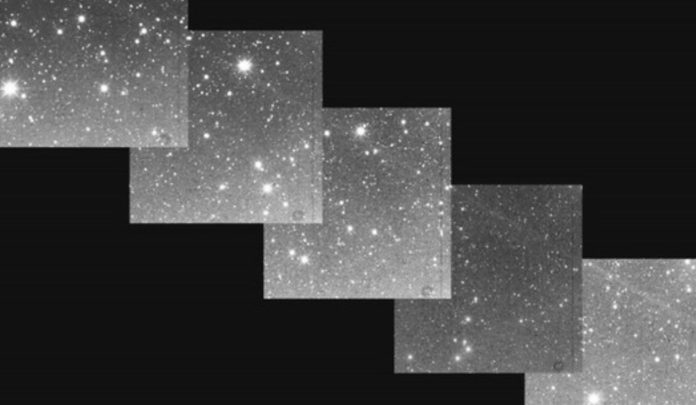An intriguing, hourglass-shaped dust trace of comet 17P/holmes has been discovered by an international team of experts.
Researchers from Russia, Finland, and Canada have discovered an intriguing hourglass-shaped dust trail left by comet 17P/Holmes. The particles that made up the trail were generated by the most powerful comet outburst yet recorded, which happened in October 2007. The research group’s calculating method will aid in predicting the occurrence and severity of meteor showers, among other things.
The authors published an article in Monthly Notices of the Royal Astronomical Society, one of the world’s oldest and most prestigious scientific journals on astronomy and astrophysics, describing the research and its findings.
Telescopes in Australia and the United States were used to observe the comet in real time. The first round of observations started in February 2013 and lasted through the years of 2014 and 2015. The second phase began in September 2020 and lasted one year.
The authors of the paper used data to prove for the first time that the set of orbits of the comet’s particles expelled by the flare had the shape of an hourglass. There are zones of convergence of the orbits along which the particles move on opposite sides (such areas are called nodes). The northern node is at the comet’s outburst point, whereas the southern node is on the other side of the Sun. Because the smallest particles have the biggest orbits, they arrive at the nodes last; medium- and large-sized particles arrive first.
As explained by senior researcher Maria Gritsevich, “the enormous amount of particles that were ejected from the comet during the outburst spread out in elliptical orbits around the Sun. This provides a unique opportunity to study the cometary material and its dispersion in interplanetary space. To understand the physics and scale of the ejection phenomenon, we developed a new model to realistically describe the evolution of the resulting cometary dust trails.”
The model characterized the motion of particles ranging in size from 0.001 mm to 1 mm, with particle ejection velocity ranging from 640 m/s and below depending on particle size, from smaller to larger.
“Since 2000, I have been modeling well-known meteor showers (such as the Leonids) using modern modeling techniques. In this study, we have developed high-precision models of the outburst of comet 17P/Holmes and the propagation of the resulting dust trace particles ourselves. Moreover, we combined both models for the first time and this resulted in a powerful new model,” adds Markku Nissinen, a member of the Finnish Bolide Network at the Ursa Astronomical Association.
Solar radiation pressure, gravitational perturbations induced by Venus, Earth and Moon as well as dust particles’ gravitational interaction with comet parent comet are all taken into account in the model’s calculations.
The researchers simulated two different types of particle motion blasted into space by a comet outburst. In one example, the particles traveled in many directions, whereas in the other, they exclusively flew toward the Sun, the source of the main influencing forces. The first model had 2000 particles, while the second had just 800. Simulations revealed that the particles’ orbits take the shape of an hourglass only in the first condition. In other words, during the comet’s 2007 outburst, the particles generated a dust trail that dispersed in various directions.
“At first, it was as if they had dissolved into outer space. However, we found that the particles converged again in the knots of the dust trail,” adds Maria Gritsevich.
The research findings enable prediction of the location and behavior of comet 17P/Holmes’ dust trail, including its path to and activity at the 2007 flash point. Furthermore, the research will aid in making accurate projections for the next such event.
“The Earth crosses the orbital plane of a given comet twice a year, the optimal observational geometry of the trace is provided in February and August. Particles of other comets often enter the Earth’s atmosphere as meteoroid streams, and then we observe them as meteor showers. Using our model, we can predict the timing and intensity of their occurrence,” says Gritsevich.
The Academy of Finland is funding the research. Scientists will continue to investigate comet 17P/Holmes to learn more about the reasons for its periodic brightness rise, the impact of secondary and seasonal influences on the particles (such as non-gravitational and irregular sunlight pressure), and the possibilities of infrared observations. Future research goals include simulating the first comet outburst, which occurred in 1892, and its repercussions.
“We predict that with our published data on the time of arrival and the corresponding coordinates of the dust trace of comet 17P/Holmes in 2022 it will be visible even in the telescopes of amateur astronomers. We expect that the results of their observations will provide additional information about the number and size of particles and their distribution. This information will be useful for building new models and understanding what happens to the comet and its trace,” concludes Maria Gritsevich.
Image Credit: Getty
You were reading: An exploding comet leaves an hourglass-shaped trail
